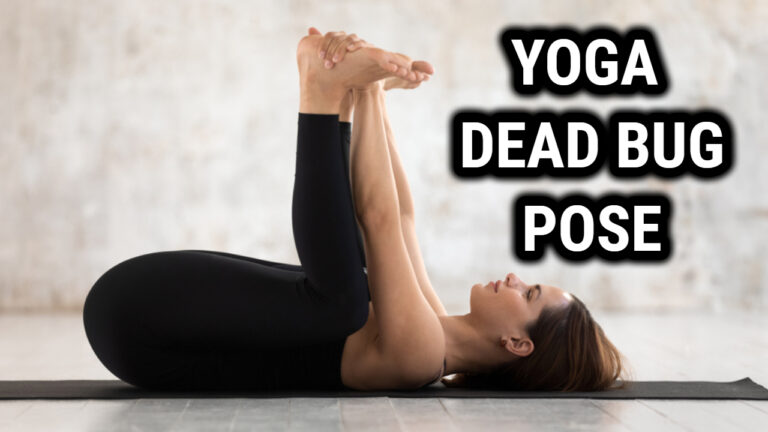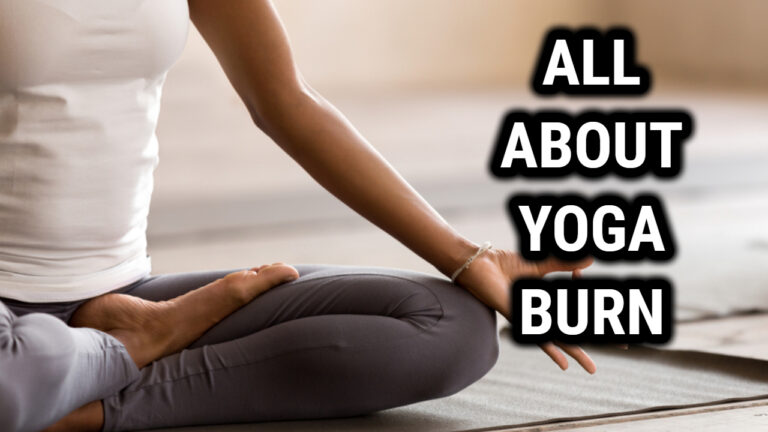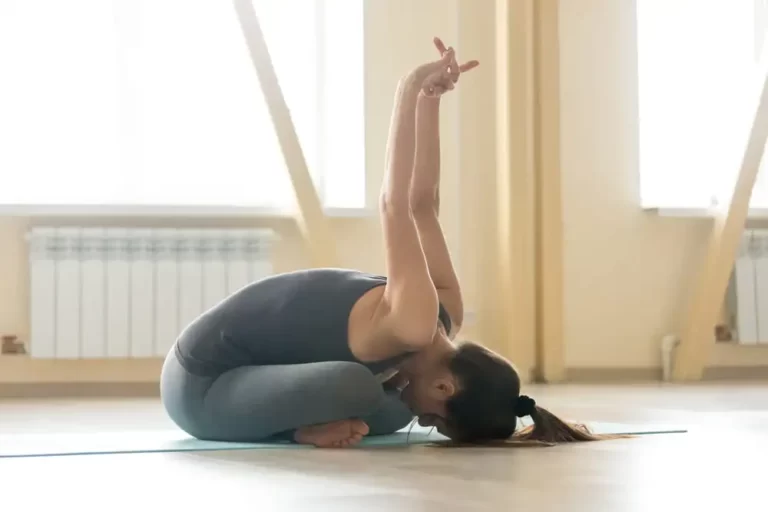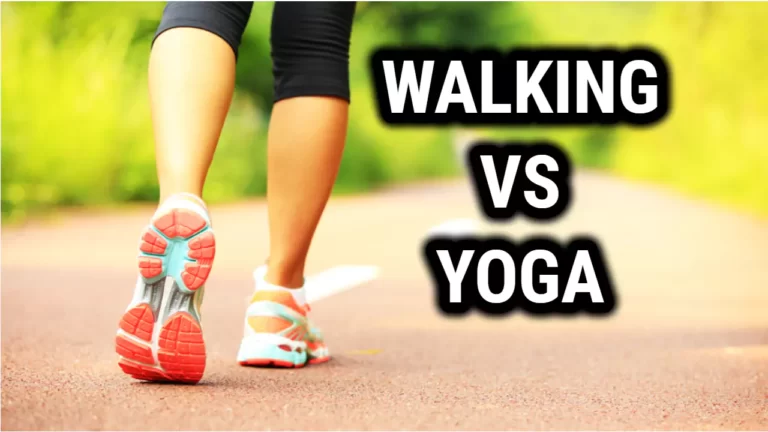What is Root Yoga: Unlock Your Inner Potential with Root Yoga

Have you ever heard of root yoga? This ancient practice is changing how people think about health and wellness in modern times. Drawing from various sources, including Ayurveda, Chinese medicine, and physical therapy, Root Yoga is an innovative new approach to creating balance within the body.
We will explore what root yoga is, its benefits for practitioners, and how it differs from other forms of yoga. We will also look at some techniques used in this practice and how they can help improve your overall health and well-being.
So if you’re interested in learning more about this unique form of yoga, read on! Root Yoga promises to be a powerful tool for personal transformation that can help you tap into more incredible energy and vitality than ever before.
Definition Of Root Yoga
Root yoga is a unique program that synchronizes the breath with the body’s movements. Imagine yourself sitting in a peaceful corner, surrounded by nature and its healing energy. As you close your eyes, you become aware of your breath, and each inhale and exhale clarifies your mind.
You feel rooted in the present moment, allowing your body to move gracefully and efficiently as you enter a yoga practice. Root Yoga is an integrated approach to yoga that promotes physical, mental, and emotional well-being through mindful movement and conscious breathing.
Root Yoga offers an effective way to unify the body and mind for excellent health. The program emphasizes connecting with your inner self by focusing on physical postures (asanas) and the breath (pranayama).
It balances strength and flexibility, encouraging practitioners to honor their bodies when practicing postures. Root Yoga also provides relaxation and rejuvenation through restorative poses that can be used therapeutically when needed.
Root Yoga cultivates awareness of our inherent connection with the environment around us while honoring our individual needs. With this awareness comes a greater understanding of how we exist in relationship with ourselves and others, allowing us to live more joyfully in harmony with nature’s cycles.
By deepening our understanding of these connections, we can experience greater peace within ourselves and better serve our community. Transitioning into the next section about ‘the benefits of practicing root yoga,’ Root Yoga offers many tangible benefits that can help improve overall health and well-being.
Benefits Of Practicing Root Yoga

Root Yoga comprises two main styles – yin and restorative – encouraging self-acceptance while promoting physical balance.
Yin yoga is a slow-paced style that focuses on maintaining poses for extended periods. This allows practitioners to access deeper layers in the connective tissues and fascia, improving flexibility and encouraging the release of tension.
Yin postures are usually held for three to five minutes, allowing one to sink deeper into the pose and cultivating patience and acceptance of where they are.
Restorative yoga is another form of Root Yoga that uses props such as bolsters, blankets, or blocks to support the body in gentle poses. This type of yoga encourages deep relaxation by allowing practitioners to hold postures for extended periods without any strain or stress on the body.
Restorative practices help improve circulation, reduce stress, and promote inner peace by calming the nervous system.
Root Yoga provides many opportunities for stillness and healing within our bodies through its accessible yet powerful combination of yin and restorative practices. This type of yoga can be performed anywhere, and it doesn’t need a studio.
By connecting more deeply with ourselves, we can gain clarity on moving forward in life with greater ease and understanding. As we learn how to bring our attention inward, we can experience more balance between strength and flexibility while honoring our individual needs.
Understanding The Body-Mind Connection

Exploring the intimate connection between the body and mind can be a powerful journey of discovering our true potential. We can understand how our physical postures can influence and reflect our emotional states through yoga therapy.
From this understanding, we can explore how simple movements in life may positively and negatively affect us. Whether someone is new to yoga or has been practicing for years, Root Yoga offers us the chance to dive deeper into understanding this body-mind connection.
The therapeutic effects of Root Yoga come from a combination of its focus on breathwork and mindful movement:
• Mindfulness: By bringing awareness to how we move through each pose, we can learn how to observe ourselves without judgment or expectation.
• Breathwork: Synchronizing conscious breathing with physical movements helps create a sense of calmness within the body. • Movement: Props encourage gentle yet effective poses that help activate areas of tension in the body while providing support for those who need it.
• Relaxation: By holding postures for extended periods, practitioners can relax deeply into their practice while allowing their bodies and minds to reset.
Root Yoga offers us an opportunity to explore our inner landscape with greater clarity and acceptance while providing us with invaluable tools to bring balance both physically and emotionally.
This practice lets us know how each movement affects our well-being and guides us toward greater self-connection and healing. Connecting with ourselves helps cultivate more trust in our intuition, giving us greater resilience when facing life’s challenges.
By understanding the relationship between the body and mind, we can use Root Yoga to create space for stillness within ourselves, allowing us to move forward in life with greater ease and understanding.
The Therapeutic Effects Of Root Yoga
The therapeutic effects of Root Yoga are numerous and can be seen in many aspects of life. Through mindful movement, breathwork, and relaxation, practitioners can gain insight into how their bodies and mind work together.
In a Root Yoga class, we explore ourselves more clearly and acceptably while learning invaluable tools for creating balance.
The therapeutic effects of Root Yoga allow us to become aware of how each movement affects our overall well-being as well as guide us towards greater self-connection and trust in our intuition.
Here are five ways that these therapeutic effects can benefit you:
- Enhanced flexibility
- Improved posture
- Increased strength
- Reduced stress levels
- Greater mental clarity
By understanding the relationship between the body and mind through Root Yoga, practitioners can create space for stillness within themselves, allowing them to move forward in life with greater ease and understanding.
How To Get Started With Root Yoga
One way to begin your journey is by taking a guided class with an experienced instructor. This will ensure that you perform the poses safely and correctly while providing the support needed when transitioning from one pose to another.
Another way is to start independently by practicing different pranayamas (breathing techniques). Start with simple pranayama, like alternate nostril breathing, kapalbhati, and bhastrika. As you get comfortable with these techniques, you can move to more advanced practices such as ujjayi.
You can also join a yoga class or find an excellent teacher to help you learn the correct technique for practicing various pranayamas.
Types Of Root Yoga Practices
Root Yoga is an ancient practice, and it can be divided into two main categories: active and passive. Active Root Yoga focuses on poses that help to build strength and flexibility, while passive Root Yoga is more about relaxation and introspection.
When practicing Active Root Yoga, practitioners are encouraged to move slowly and mindfully through postures to build physical and mental strength. This can involve postures such as Warrior I, Triangle Pose, and Chair Pose. By taking the time to concentrate on the alignment of each posture, practitioners can gain a deeper understanding of their bodies.
Meanwhile, Passive Root Yoga is about creating a growth and healing space. This can involve guided visualizations, pranayama (breathwork) practices, or meditations that help to open up the body’s energy pathways. Through this practice, practitioners will easily find their inner calmness and stillness.
By exploring active and passive Root Yoga practices, practitioners can reap the full benefits of this style of yoga – from building muscle strength to finding inner peace – creating a well-rounded approach for personal growth and development. This, in turn, allows practitioners to create a space for growth & healing within themselves.
Also Read: Easy-To-Follow Basic Yoga Poses – Perfect For Anyone
Creating A Space For Growth & Healing
When practicing Root Yoga, creating a space for growth and healing is essential. This begins with setting an intention – whether to find inner peace or build physical strength – and then focusing on the breath. From here, practitioners can explore active and passive practices to create well-rounded ones.
To create this space for growth and healing, four essential steps can be taken:
1) Take the time to set an intention for your practice – what do you want to get out of it?
2) Establish a comfortable and stable foundation – this could involve using props such as blocks or blankets if needed.
3) Focus on the breath – breathing deeply into each posture while maintaining mindful awareness to access the stillness within.
4) Remain patient and compassionate with yourself throughout the practice – recognize that progress takes time but also celebrate any small wins you may have.
By embracing all four steps, practitioners can create a safe space to explore Root Yoga practices and reap its many benefits – from finding balance & inner peace through passive methods to developing strength & flexibility through active practices.
Developing Strength & Flexibility Through Root Yoga

Root Yoga allows practitioners to cultivate strength and flexibility, both physically and mentally. It’s like opening a portal to self-discovery and transformation, where one can explore their potential through the power of their practice.
To do this effectively, it’s essential to understand how all the pieces fit together – from setting intentions and establishing a stable foundation to focusing on the breath and being patient with oneself.
It’s also beneficial to note that Root Yoga is not just about physical postures or asanas. Many other elements, such as mudras, pranayama, mantra chanting, meditation, and sacred rituals, can be explored to get the most out of your practice. By embracing these practices, yogis will experience a deeper connection with their bodies and spirit.
Sacred rituals can be compelling in aiding the journey toward inner peace. From exploring mantras for self-love or gratitude to honoring nature through offerings such as flowers or incense – these simple acts of devotion can help open up new realms of awareness within ourselves.
Exploring Sacred Rituals In Root Yoga Practice
Sacred rituals can create a sense of reverence and connection, essential in Root Yoga practice. With each ritual, we are reminded of our relationship with ourselves and that our practice is part of something larger.
This collective consciousness extends far beyond the physical plane. When we offer up these sacred acts of devotion, we become vessels for higher energies to flow in and around us.
Related Read: Sacral Chakra Yoga Poses: Enhancing Your Creativity and Emotional Balance
Frequently Asked Questions
How Often Should I Practice Root Yoga?
Many yoga practitioners may be familiar with ‘Root Yoga,’ but what does it mean? Root Yoga is a practice that centers around establishing a solid foundation for your yoga poses and sequences. It involves using your body’s power to achieve more efficient movements, increase balance and stability, and build overall strength.
The answer depends on what level of experience you have with the practice and your own individual goals. Generally speaking, beginners should practice Root Yoga at least three times a week to start building their foundation and mastering the basics. Here are some tips for getting the most out of your Root Yoga practice:
1. Start slow: Begin by focusing on basic postures while taking time to understand how each pose works within your body.
2. Find a comfortable flow: Once you’ve mastered the basics, experiment with different flows that feel natural.
3. Incorporate props: Props such as blocks or straps can help you deepen your poses and further challenge yourself.
4. Have fun: Remember to enjoy yourself! Practicing yoga should be an enjoyable experience for both your body and mind!
Whether you are a beginner or advanced yogi, practicing Root Yoga can benefit both physical and mental health. Regular practice can help improve posture, reduce stress levels, strengthen muscles, increase flexibility, and even improve mental clarity – all while giving you an empowering feeling of being grounded in the present moment!
What Type Of Equipment Is Necessary For Root Yoga?
Yoga mats are a must when doing Root Yoga. They provide cushioning and stability while allowing practitioners to stay in place during poses. Having blocks or straps can also help with postures that require more balance or flexibility.
It’s recommended to use props made from natural materials such as cork, bamboo, or cotton, so they don’t slip on the mat.
Finally, to fully experience the benefits of Root Yoga, one should invest in a few extra items, such as meditation cushions or bolsters, to make your practice more comfortable. Having some aromatherapy oils or incense is also beneficial to create a calming atmosphere for your session.
Is Root Yoga Suitable For All Ages?
This type of yoga is suitable for all ages and perfect for young adults and students, regardless of experience with other physical activities or yoga.
Overall, root yoga is an accessible form of exercise that can be practiced by people from all walks of life – no matter what age they are – providing numerous physical and mental health benefits along the way.
Are There Any Risks Associated With Root Yoga?
The most common risk associated with root yoga is overstretching. Due to its slow nature, some practitioners may be tempted to push their limits and stretch further than they should.
This can cause strain on the muscles or ligaments, leading to pain and discomfort. Additionally, improper form can also increase the likelihood of injury. Therefore, practitioners must focus on proper technique and listen to their body’s feedback.
Are There Any Modifications For People With Physical Disabilities?
When making modifications for people with physical disabilities, having a knowledgeable instructor is vital to help customize the practice.
This allows the individual to get the most out of their experience while feeling safe and comfortable in their body. For example, poses can be adapted by providing props or alternative positions more suitable for each person.
Root yoga provides an excellent way for people with physical disabilities to connect with their bodies in a supportive environment. They can use this opportunity to move gently and mindfully, finding stillness and peace within themselves and nature.
With the proper guidance and support, it can become an incredible healing journey that helps them feel connected to something greater than themselves.
Conclusion
Regularly practicing Root Yoga can help improve flexibility, strength, balance, and focus. It is suitable for people of all ages and levels of fitness, as modifications are available to accommodate physical disabilities.
Consistency is the key to getting the most out of your Root Yoga routine. By carving out a dedicated time in your schedule for yoga daily, you can reap all the fantastic rewards this ancient practice offers – from enhanced physical well-being to mental clarity and peace of mind. As the adage goes: “practice makes perfect”!
So why not try Root Yoga today – you may find yourself hooked on its transformative power!





